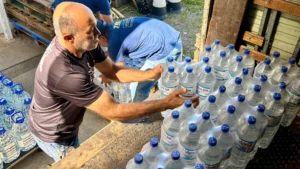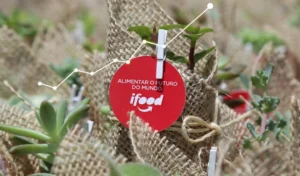In the United States, California has taken the lead in initiatives to reduce plastic pollution. One new law (SB 54) requires all packaging produced in the state to be recyclable or compostable by 2032, reports The New York Times —the newspaper considers this the country's most comprehensive restriction on plastics.
Over the next ten years, any product sold, distributed or imported must reduce the use of single-use plastics in its packaging by 25% — and 65% of single-use plastics must be recycled. To achieve this, manufacturing companies will have to promote changes and build a adequate recycling infrastructure.
This new legislation, therefore, transfers responsibility from consumers to the plastics industry. By 2032, US$ 5 billion will be raised from industry members and invested in efforts to reduce plastic pollution and support communities harmed by this type of waste.
The recycling targets are gradual: by January 1, 2028, companies will have to recycle at least 30% of single-use plastics produced; in 2030, the percentage increases to 40%, and should reach 65% in 2032. Companies that do not meet the objectives will be fined US$ 50 thousand per day.
To adapt to the new law, companies will also have to rethink packaging design, as dyes and adhesive labels can make recycling plastic containers unfeasible. According to Input, some beauty brands have stopped giving away free samples, and others are offering incentives for consumers to refill products using the same packaging.
The size of plastic waste
California's initiative is important because plastics are made from fossil fuels — and the plastics industry is expected to consume 20% of the oil produced in the world by 2050, according to The New York Times.
At the moment, the world produces 400 million tons of plastic per year, of which less than 10% are recycled, according to the United Nations, which considers the adoption of single-use plastic products to be worrying.
Packaging is the destination for more than a third (36%) of the plastic produced on the planet, including single-use plastic for food and drink containers, which make up the majority (85%) of the trash that ends up in landfills or becomes non-waste. regulated, according to the UN.
Also a cause of iFood
Zeroing plastic pollution in its operations by 2025 is one of the pillars of iFood Regenerates, iFood’s positive environmental impact plan. To achieve this goal, the company has worked on different strategic fronts.
On the one hand, it created actions that reduce the use of plastic in deliveries, especially cutlery and straws. Since 2021, considering only orders where the consumer responds “I don't need these items”, around 510 tons of plastic have stopped circulating, as more than 200 million orders have been delivered without single-use plastic items.
Furthermore, the company has invested in partnerships to develop sustainable packaging and encourage the recycling chain — from consumers to cooperatives.
Want more about these initiatives? Click here.


